Linux is gaining popularity among laptop users in the past few years, with some manufacturers even shipping laptops with Linux pre-installed.
Whether buying a Linux pre-installed laptop or selecting a Linux distro for your existing laptop, there are many things to consider. These include such things as:
- Comfort-level
- Laptop age
- Purpose of laptop
- Battery life
- Aesthetics
Let’s look at six best Linux distros that seem custom made for laptop users.
6 Best Linux Distros for Laptops
1. Manjaro
The Arch Linux-based distro is one of the most popular Linux distros and is famous for its outstanding hardware support.
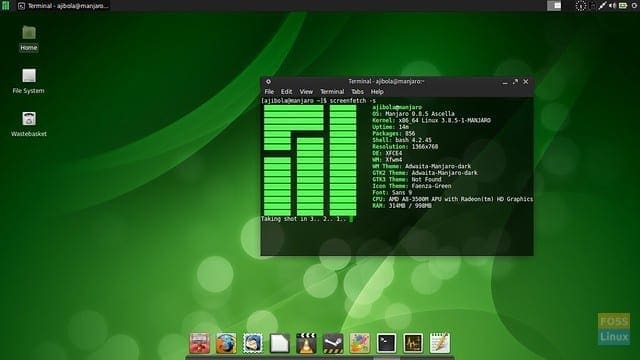
Manjaro Screenshot
Recommended System Requirements
- 1GB RAM
- 30GB HD
- 1GHz processor
- HD graphics card
Manjaro boots fast and has an aesthetically pleasing interface with the default customized lightweight XFCE desktop environment.
Manjaro’s speed, power, and efficiency combined with its easy installation, access to the Arch User Repository (AUR), and rolling-release development model makes it ideal for laptop users regardless of their experience level with Linux.
Other benefits of Manjaro are the ability to switch between kernels, the humongous Manjaro software repository maintained by the Manjaro team, and the friendly Manjaro community.
Many distro communities are less than noob-friendly. It is not the case with the Manjaro community.
A significant drawback of running Manjaro on your laptop, unfortunately, is power management. Many Manjaro users complain that their laptop battery life is often worse than when running Windows.
Manjaro users can resolve this issue by installing the Linux Advanced Power Management Tool, TLP.
2. Linux Mint
Linux Mint is one of the most popular Linux distros around. Such has been the case almost immediately since its release in 2006. With millions of users and over thirteen years of development, Linux Mint is stable, safe, and reliable.
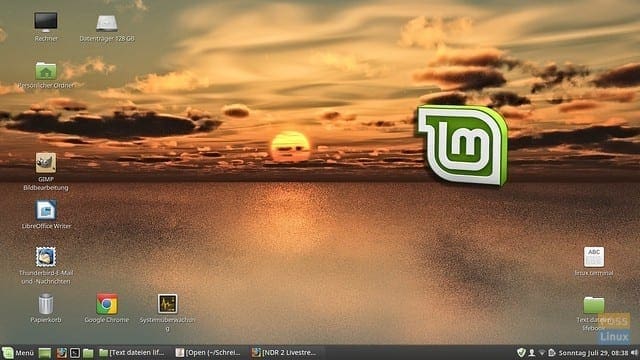
Linux Mint Screenshot
Recommended System Requirements
- 1GB RAM
- 20GB HD
- 1GHz processor
- 1024×768 graphics card
Linux Mint’s Cinnamon desktop environment is not only fast and easy to use, but its design is sleek. Its icons and windows are crisp and clean. For non-Cinnamon fanes, MATE and XCFE are options to explore.
Linux Mint is extremely fast, even more so with the release of Linux Mint 19 “Tara.” Boot time is snappy as well.
A real positive of Linux Mint is the Timeshift software which allows you to create a system snapshot. Should your system ‘break’ or become unstable, you can quickly restore it to the previous stable point. Better yet, Timeshift integrates seamlessly with Linux Mint’s System Update Manager.
Among Linux Mint’s many benefits are its vast software repository, boasting over 30,000 selections. Its file manager ‘Nemo’ not only provides more than just basic file management but allows to connect to servers and mount locations using various protocols.
The vast and useful array of software installed automatically include GIMP, VLC, LibreOffice, Thunderbird, and Firefox.
The only real downside that I can see to Linux Mint is there is still no KDE version even after thirteen years.
3. Ubuntu
Ubuntu, the Debian-based distro, is the ‘daddy’ of numerous distros released since its creation in 2004, including two in this article, Linux Mint, and MX-Linux. Ubuntu remains popular in the Linux community and still enjoys the number four ranking on distrowatch.org.

Ubuntu Screenshot
Recommended System Requirements
- 1GB RAM
- 30GB HD
- 1GHz processor
- HD graphics card
While many longtime Ubuntu users are happy with the default Gnome interface, unfortunately, not all Linux users think alike. It is worth noting, however, that the latest Ubuntu 19.04 release’s, Disco Dingo, implementation of Gnome is much snappier than in previous versions.
Installation is fast, intuitive, and a snap. Canonical’s Livepatch service is well worth it, enabling your Ubuntu laptop to receive security updates and install without rebooting. Standard users can get tokens for free and receive the Livepatch Service directly from Canonical.
Also, in Dingo, the familiar Nautilus file manager is much faster and includes improvements to its interface. The overall interface of Ubuntu is nice and smooth. You seldom, if ever, encounter glitches or lagging.
Ubuntu’s embrace of Snapcraft (for developers) and snaps also add to the distro’s attractiveness and ease-of-use.
Like many other distros mentioned, here, boot time is an issue with Ubuntu on some older laptops. Unfortunately, while there are many tweaks to address this, the only sure-fire and best way is to replace with Lubuntu.
4. MX Linux
Before reading this section, please know that I currently use MX Linux as my laptop distro, so there could be some bias.
Based on the Debian stable, MX Linux has topped the distrowatch.org list for close to a year now, for a good reason.
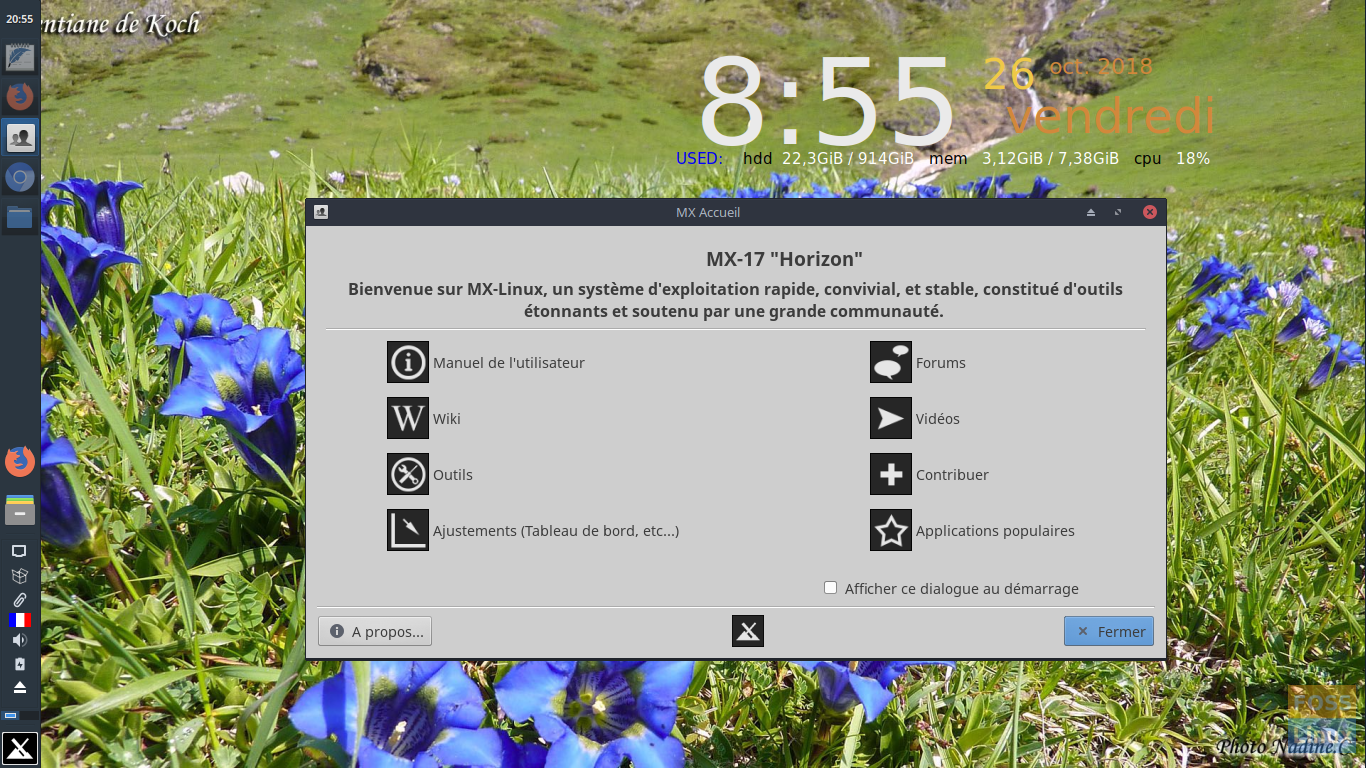
MX Linux Screenshot
Recommended System Requirements
- 2GB of memory
- 30GB HD
- 2GHz processor
- HD graphics card
The default customized lightweight XFCE desktop environment ensures fast booting although it admittedly makes for a simple looking desktop.
The core components carried over from the antiX Linux distro (Linux MX is a collaboration from the antiX and MEPIS developers) ensures support for older hardware but at a negligible performance cost.
Linux MX has, arguably, the assist to use desktop interface of all the distros included in this article. Its single taskbar makes finding things quick and straightforward. MX Tools (think Windows Control Panel) is a handy utility for users, allowing quick access to change settings and perform minor ‘tweaks.’
Installation is intuitive and easy, and the Synaptic Package Manager allows for access to an extensive amount of packages, although the base installation includes a well-rounded set of software.
Laptop battery use is not an issue with MX Linux, nor is performance.
Having used MX Linux on my laptop for over six months, I cannot report a single issue that I have run into. Packages are easy to install, and updates run without issue. It is easily the most functional distro that I’ve used on my laptop since I’ve owned it.
5. Fedora
Fedora is a Red Hat-backed Linux distro that holds its own with every distro included in this article. The best description I’ve ever heard for Fedora is “Red Hat for the open-source community.”
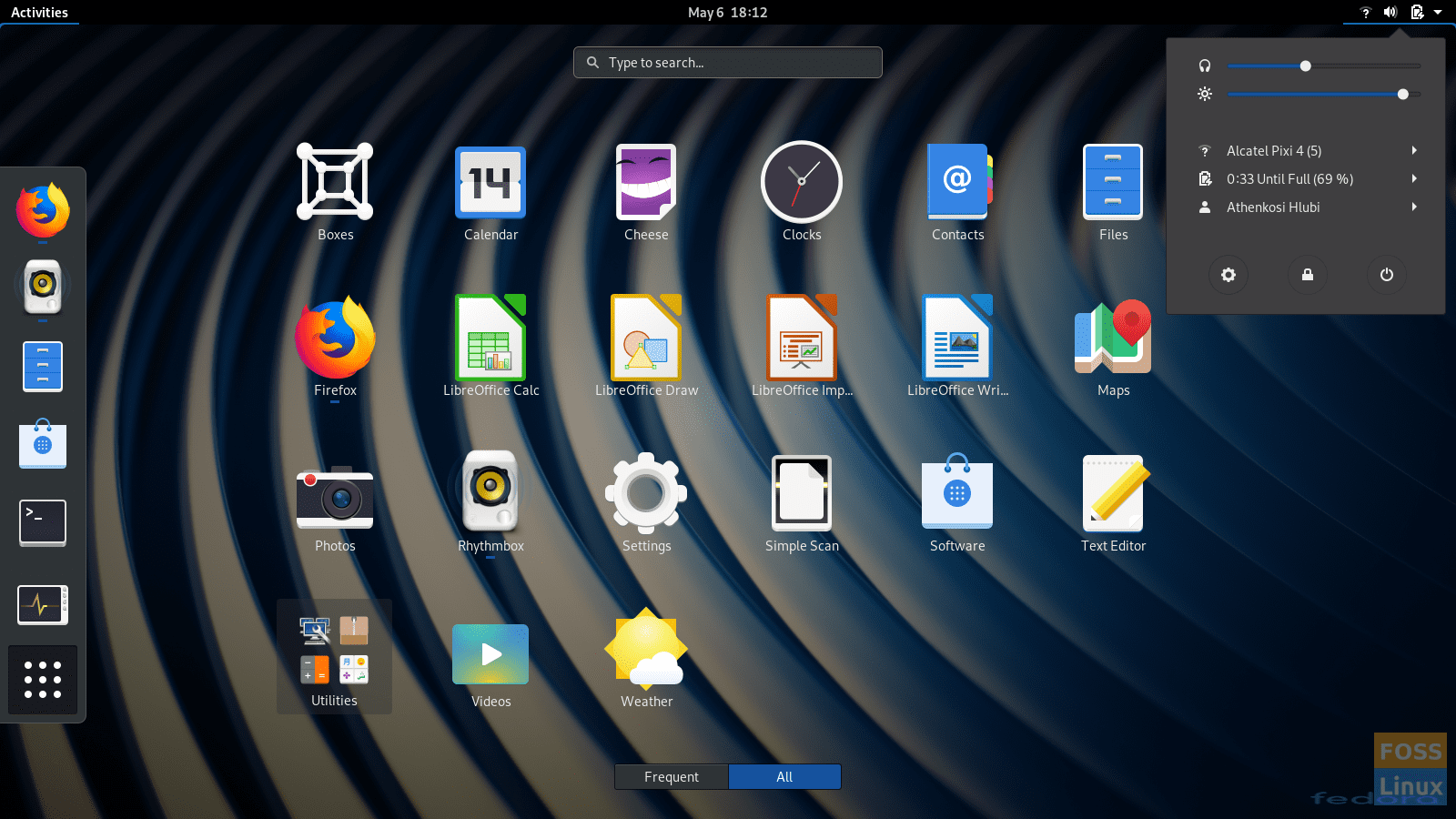
Fedora Screenshot
Recommended System Requirements
- 2GB of memory
- 30GB HD
- 2GHz processor
- HD graphics card
Fedora’s embedded security feature via the Security-Enhanced Linux (SELinux) module makes the distro an attractive for security-minded Linux users. Its implementation of the tried-and-true Gnome desktop environment gives long-time Linux users a sense of familiarity and security while providing new users an easy-to-use interface.
For Gnome-allergic Linux users, different spins are available, such as SOAS, Cinnamon, KDE Plasma, XFCE, and a few others.
Fedora’s hardware support is unmatched in the Linux FOSS community. Add to that, the RPM package manager allows for more flexible built packages with more features (i.e., confirmation of installed packages, rollback, history, etc.).
Another selling point of Fedora is that it has arguably the most significant user community of any Linux distro. Cases in point are the Fedora forum and the Fedora Reddit community.
Laptop battery usage is, like with other Linux distros, an issue in Fedora. However, you can quickly increase the battery life of a Fedora laptop with several utilities.
6. Deepin
Based on Debian’s stable branch, Deepin often receives praise for its aesthetics, as well it should. Deepin uses its desktop environment, called Deepin DE (DDE) that TechRepublic describes as “the single most beautiful desktop on the market.”
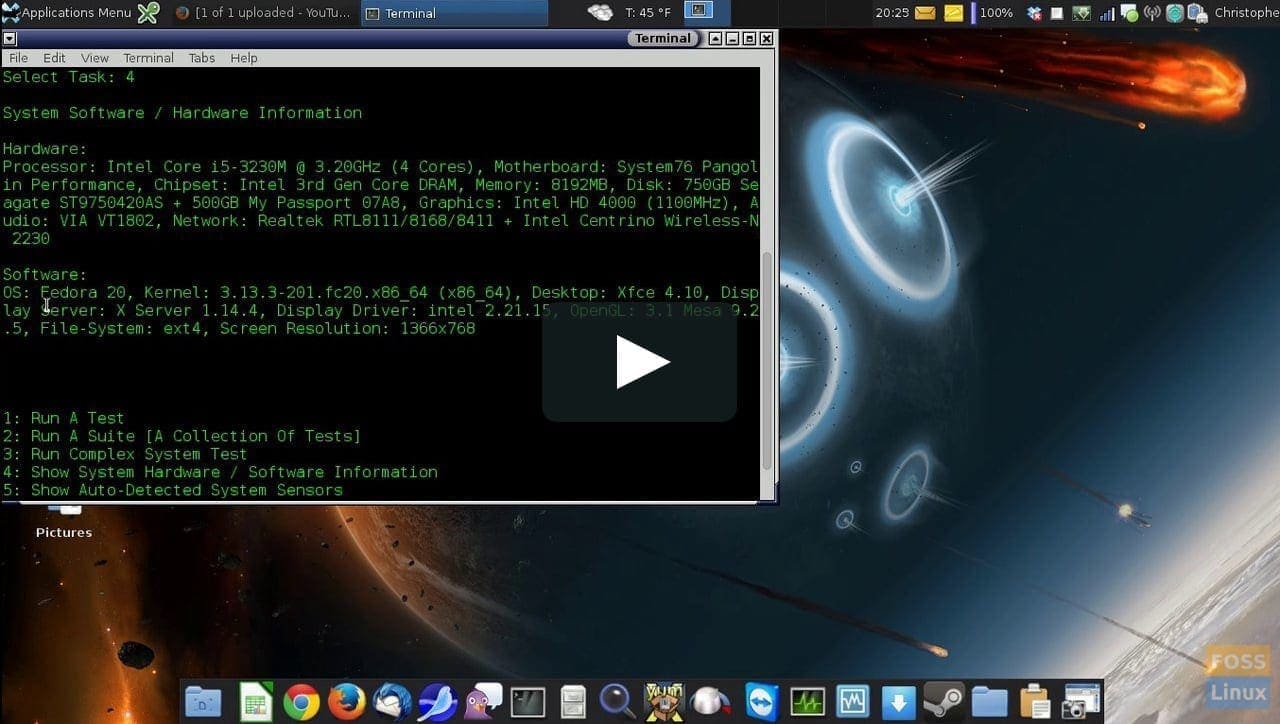
Deepin Screenshot
Recommended System Requirements
- 1GB of memory
- 20GB HD
- 2GHz processor
- HD graphics card
Deepin reportedly boots faster than all the other distros we’ve covered thus far and ensured incredible laptop battery life longevity.
Deepin is an attractive choice for laptop users for several reasons including NVidia Prime support, power-saving mode and auto-mode switching (for laptops), rolling-release distribution, and comes with its powerful toolkit, Deepin Tool Kit.
Other benefits of Deepin are that it supports all the repositories and libraries from the Debian channel and Ubuntu repositories and libraries, installation (Deepin Installer) is easy and intuitive
I’ve not yet discovered a real drawback to Deepin. A past complaint was that it used a statistical tracking service in its App Store, but that is no longer the case.
I’ll readily admit that I’m a distro-hopper. In the space of two years, I’ve had every distro covered in this article on my laptop (except for Deepin, although I plan to try out the live ISO this week). My current laptop distro is MX-Linux, which has lived on my laptop for the past six months. It is the longest that I’ve ever had a distro on my laptop.
This is due much to my grandkids and my wife, all of whom often use my laptop. The other distros seemed foreign to them, and I had to spend much of my time assisting them. From having to help install games and applications to such simple tasks as launching Chrome or gracefully rebooting the laptop.
Fortunately, the MX-Linux Windows-like interface does not confuse them, allowing them easy navigation of the interface. MX-Linux is also powerful enough to satisfy the Linux-geek in me.
Conclusion
For those users looking for a new distro for their laptop, I strongly suggest you download the live ISO of the six distros highlighted above.
Kick the tires and take them for a spin. You’ll know soon enough when you’ve found the distro that best suits you.

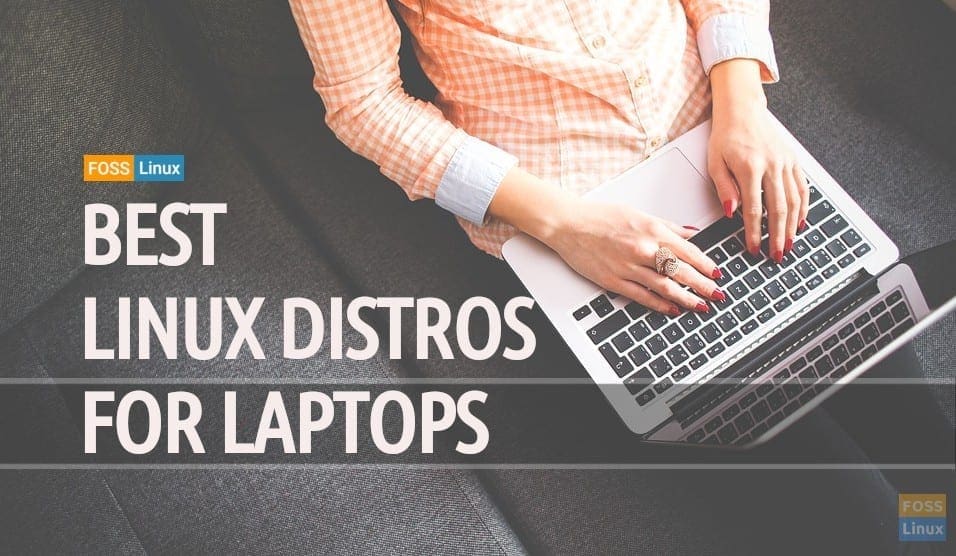
22 comments
FYI, TLP is installed by default on Manjaro. Power management issues are due to OEM Linux driver support (or lack of it), not a single distro’s fault.
Hi, Mark,
Thanks for catching that. I honestly did not know. Either TLP was not yet installed on the Manjaro distro that I tested almost a year ago, or I did not pay it any attention.
I really appreciate you pointing that out for our users.
As for the power management issues being due to OEM Driver support (or absence) of it, I completely agree.
Thanks again for pointing that out, and as always, thanks for reading FOSSLinux.com!
Travis
I believe Tina is out for the Linux Mint distro. Tara was 19.1 and LM is now at 19.2.
Hi, Jim,
You’re absolutely right. I went with the install that I had already downloaded Tessa, or MX Linux 19.1 was released in December of last year. Tina (Linux 19.2) was just released earlier this month on August 02.
Great catch! Thanks for pointing that out!
Now, if you excuse me, it appears as if I have an update to run!
Thanks again, and as always, thanks for reading FOSSLinux.com!
Travis
I’ve got MX Linux installed on my laptop as well, after a little bit of distro hopping. The first three distro on your list state lower system requirements than MX. Are they better for older laptops?
Hi, Matthew,
For the Recommended System Requirements, I went mostly with the official stats found on the internet. As for the first three distros (Manjaro, Linux Mint, and Ubuntu), I found that on the laptop that I use for testing (2 GB, RAM 1.5 Ghz), Ubuntu and Linux Mint ran flawlessly. I had some issues with Fedora, but I believe that was because I had stacked the system with software. I only used Fedora for 2-3 weeks before switching, but based on my experiences with distros, I believe that the issue was on my end, and not the Fedora distro.
As for the best distro for lightweight systems, I stand by MX Linux, but will be installing and writing a number of articles on Deepin in the near future. Please stay tuned in and I will provide updates via the articles. Based on what I’ve read, I really have high hopes for Deepin.
Thanks for the question, and, as always, thanks for reading FOSSLinux.com!
Travis
Thanks Travis. I haven’t tried Linux Mint, but I definitely felt Ubuntu was more sluggish than MX Linux, hence my question. I tried Deepin also and felt it wasn’t as lightweight as MX.
No problem, Matthew,
I’m curious as to what version of Deepin you installed? I just installed version 15.11 today, and so far things are looking good.
Thanks,
Travis
I have a Windows Vista era laptop (extremely wick even in those days), tried a bunch of different distros (including pure Arch) and came out with Debian Stable with i3 gaps on top of it. And got a completely usable device. No Full HD playback though.
Mx linux is definitely the way to go if you’re worried about performance, but still want that normal desktop experience. If you’ve got a really old laptop, antix might be a better choice just because it uses more lightweight WMs. I’ve personally had mx installed for a year and love it.
Agreed, Andy, but I’ve not yet looked into Antix. I must give it a spin. Like you, I’m loving MX Linux, but am also liking what I see in Deepin so far. Just installed it today.
Thanks, and as always, thanks for reading FOSSLinux.com!
Travis
Zorin is pretty dang nice as well, great hardware support and it’s based off Debian and it blends a few nice interfaces especially nice is it’s ability to look and feel and even run Windows apps with basic minimal configuration. It’s nice, check it out.
Hi, Robb,
Thanks for the tip on Zorin, I will most definitely check it out. Maybe we’ll even get an article written on it.
Thanks, and as always, thanks for reading FOSSLinux.com!
Travis
The screenshot you supplied for feeling looks nothing like the distro going back several years, and I’m suprised you didn’t mention that it’s developed by a Chinese company with ties to the CCP. On a side note my daily driver of choice is KDE Neon, you should give it a go as well.
Hi, Christopher,
Thanks for the comment. I just installed Deepin today, and the screenshot is pretty comparable from what I see.
I did mention that “A past complaint was that it used a statistical tracking service in its App Store, but that is no longer the case.” However, I did not want to get into any of the politics of it all. I’ve read and researched enough that, at least for home use, I’m comfortable with it.
I also appreciate the KDE Neon suggestion. I plan to kick the tires this weekend.
Thanks, and as always, thanks for reading FOSSLinux.com!
Travis
Thank’s Travis, just installed Manjaro on my dad’s laptop without problems. Sound, WI-FI and other drivers working without my interventions.
Mint and Zorin had problems booting, i guess because of vga driver issues. Didn’t have time or desire to troubleshoot it.
That’s great, Joey. I hope your Dad likes it, although I’m pretty sure he will. Just curious, what version of Manjaro did you install? My fellow FOSS Linux writer Zohaib Ahsan has a great article on the just-released Manjaro 19.0, Manjaro 19.0 is here with Linux 5.4 and improved UI. It’s well worth the read.
Thanks,
Travis
I installed Manjaro XFCE 19.0. Although i like Mint theme a bit more, Manjaro looks good enough and i didn’t have problems clicking around to set basic things. And that driver detection really did it’s job, unlike Ubuntu/Debian based distros that i often had VGA problems with.
That’s great to hear, Joey, and I’m glad my article was of help. The biggest win is that we have a new user in the Linux community with your Dad!
Take care,
Travis
I have an HP 15-f211wm last time I tried Linux on it i believe it was LM and it overheated instantly unfortunately the laptop does not have a cooling fan so I have a lap stand with fans built in it. If anyone knows anything about this model and wants to help a noob out with a good Linux distro and the setup id greatly appreciate it!
“Ubuntu, the Debian-based distro, is the ‘daddy’ of numerous distros released since its creation in 2004, including two in this article, Linux Mint, and MX-Linux.”
The statement might be incorrect, I believe they meant to say Mint and Pop_os.